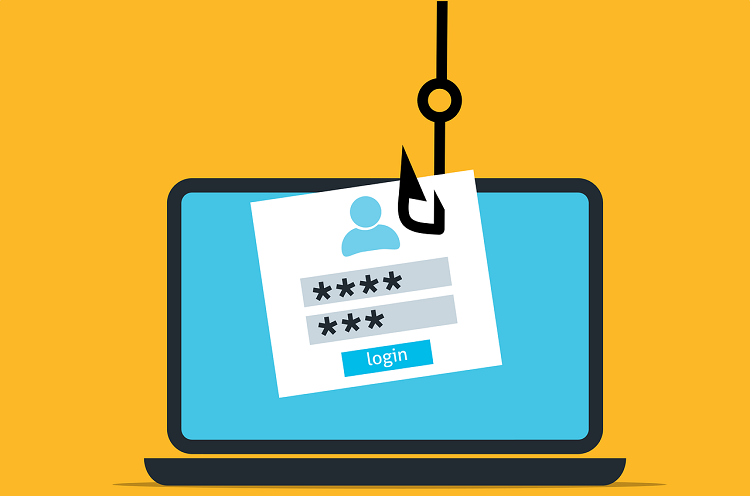Phishing was initially directed explicitly toward the consumer market, with malware deemed a primary threat to companies. Nowadays, the immediate social threat for a business is phishing, with the danger being responsible for over half of cyber breaches.
While cybersecurity is always recommended and implemented by many organizations, these strategies can’t be 100 percent successful at blocking threats. That means staff need to receive training against phishing to comprehend the concept and fully understand what to watch out for with an attack.
The hackers have varied techniques to trip up staff members, but a few are commonly used across the board. Let’s look at phishing in more detail to see how training on the subject can optimally prepare staff.
Familiarize Yourself with Phishing
Phishing is a common hacker threat that used to be directed more toward the individual consumer. Now hackers prefer to target big businesses through unwitting staff members.
When you’re focused on assignments, it’s easy to inadvertently click on what appears to be a legitimate email without questioning its credibility. Phishing training aims to ensure the employee takes that extra second to discern validity from fraud.
Learn common types of phishing attacks at https://www.itgovernance.eu/blog/en/the-5-most-common-types-of-phishing-attack/.
Consider these training tips to see if you recognize phishing from the outside looking in.
The act of phishing is considered a crime
Fraud is a criminal offense. Phishing is a form of fraud where a hacker impersonates a credible brand in an attempt to collect sensitive details while forwarding the user to a malicious site.
The emails from the hacker will appear to come from a reputable vendor with whom you have an account. However, when clicking on the link, you will be directed to a false login page where private credentials are “harvested.”
Untrained staff seeing what appears to be valid logos and letterhead in the email and on the phishing page won’t recognize the fraud.
The “phishers” can disguise emails readily
It’s wise never to assume an email is valid based on the proposed sender. Hackers are capable of “spoofing” addresses, so victims believe the communication is legitimate instead of something malicious.
Email spoofing is presented in two formats: cousin domains and display name spoofing. In the latter, a valid business name is incorporated for the sender. Still, if you look closely, the email beneath is a random address that would typically not be associated with a reputable firm.
This is an effective technique with mobile device viewing because the email address is hidden, and only the sender’s name is seen.
The cousin domain appears like a reputable email address, but it will have a slight alteration. If it were “Apple.com, phishing techniques would make this apple.co.”
Pay attention to the email subject line
In the subject line, there will either be an incredible offer for something free or a threat meant to scare you into action, like your credit card being attached. Bringing extreme emotion into play is a common phishing methodology since users will react impulsively and quickly.
Any aggressive email implying a threat without immediate action should be considered a scam. It’s a scare tactic meant to gain access to sensitive details.
Usually, with phishing awareness training, the staff is provided with examples of these malicious emails to help them recognize the psychology hackers incorporate into their trickery.

Phishing is becoming more sophisticated and personal
These attacks were, at one time, a bulk practice sent to massive groups of users simultaneously with no personal references in the greeting or body of the document. The recipient would be referred to as “client,” “staff member,” or “customer.”
A reputed organization will refer to its clientele by name when sending correspondence, but that doesn’t mean a personal email is valid. The new-age hackers have automation, allowing them to prefill the details into the page.
Criminals are becoming more sophisticated and making fewer mistakes. Still, the indication in training is to read each email with a careful eye to note potential grammatical or spelling errors to tarnish the sender’s credibility. Read here for tips and strategies to prevent phishing attacks.
Final Thought
The repercussions of a phishing attack can be exceptionally time intensive and expensive, with the possibility of compromising a company’s whole network. Participating in Phishing Awareness Training ensures the entire organization works together to protect business integrity.
Business leaders need to develop a system for reporting phishing attacks imparting the importance of staff making reports instead of merely deleting the scam. Phishing awareness training should be routine, with immediate refreshers if an employee clicks on a fraudulent link.
The business leader should use the email for review with the refresher to point out the red flags and key indicators overlooked, plus offer more in-depth materials to prevent future instances.
You can be alert and feel you’re prepared but still be tricked. These are sophisticated attacks. That’s why companies are investing in awareness training to try to stay ahead of the criminals.













